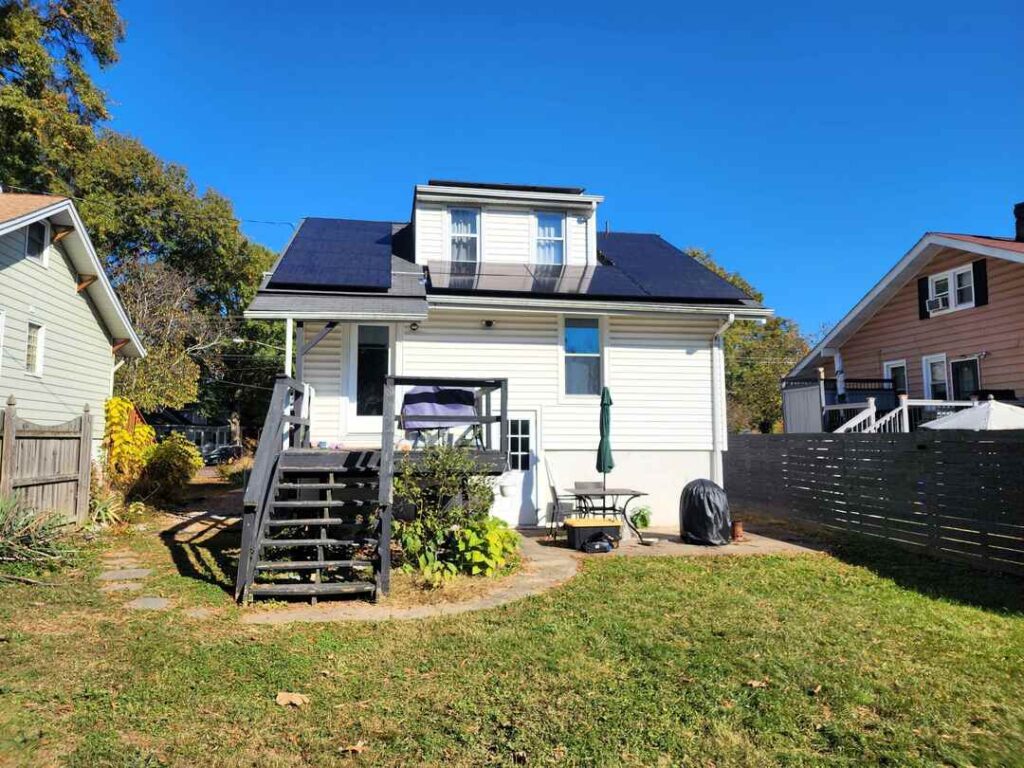Maryland is making moves in the clean energy transition! The Maryland Energy Administration (MEA) recently announced new programs for Fiscal Year 2025, aimed at community resiliency and solar access. While the one to watch for homeowners of the new Maryland solar incentives is the Maryland Solar Access Program, the state is backing other noteworthy initiatives too.

Maryland Solar Access Program
Last spring, Maryland’s General Assembly passed the Brighter Tomorrow Act of 2024 (S.B. 783), which established the Maryland Solar Access Program. The program’s goal is to help more Marylanders benefit from renewable energy.
The program’s funding is $15 million, and grants are based on a rooftop solar system’s size, up to $7,500. The program won’t apply to systems already installed, but to new solar arrays.
This is an income qualified program, open to all Maryland residents. Here are the maximum income levels:
- 1 person: $128,430
- 2 people: $146,715
- 3 people: $165,090
- 4 people: $183,375
- 5 people: $198,090
- 6 people: $212,715
- 7 people: $227,430
- 8 people: $242,055
Residents applying for the grant must choose a solar contractor off MEA’s Participating Contractor List; the administration is vetting contractors in advance to ensure they’re licensed, credentialed, and willing to abide by a consumer protection policy.
Mark your calendar for January 2025! That’s when MEA plans to open the program for applications. Grants will be available on a first come, first served basis.

Commercial Solar Grant Program
Maryland launched the Commercial Solar Grant Program to help businesses and organizations working in underserved communities install solar on their rooftops. The program also offers enhanced incentives for veteran-owned and minority-owned businesses.
While the program launched with a $5 million budget, that figure has increased to $10 million as of mid-November.
The program is broken down into what MEA describes as “areas of interest:” one is equitable solar access, aimed at businesses and organizations described above, and the other is sustainability, aimed at businesses or organizations with large energy needs hoping to reduce power costs and improve sustainability.
Grant amounts are based on area of interest plus the solar system size. Grants are larger for the equitable solar access area, providing either 75% of the net total project cost, or $500,000 (whichever is lower). For the sustainability area, the grants are 50% of the net total project cost or $500,000 (again, whichever is lower).
MEA is accepting applications right now, and will through the end of March 2025 or until funding runs out. They’ll award grants on a first come, first served basis.

Energy Efficiency Equity Grant Program
This particular program isn’t new, but MEA recently announced new funding for Fiscal Year 2025. Through the Energy Efficiency Equity Grant Program, local governments and nonprofits apply for funding for electrification projects or zero-emission technologies, with the ultimate goal of providing home and building energy efficiency upgrades for low- to moderate-income Marylanders.
MEA’s director Paul Pinsky described it this way: “The Energy Efficiency Equity program is designed to help lower-income Marylanders statewide improve their home’s energy performance, which greens the earth and their wallets at the same time.”
For example, one of the project categories is residential retrofits, providing homeowners with a home energy audit and then cost-effective weatherization, electrification, or energy efficiency upgrades based on the audit.
The anticipated program budget is $11.2 million, and the deadline for nonprofits and local governments to apply is January 16, 2025.

Benefit From Maryland Solar Incentives For Your Clean Energy Installation
If you’re thinking about going solar in Maryland, now is a great time to do so! In a few weeks, you can apply for the Maryland Solar Access Program, if you qualify.
Remember, too, that you can take advantage of the 30% federal solar tax credit. And Maryland is also one of the few states that has a Solar Renewable Energy Certificates (SRECs) market. The bid price as of the time of writing is $57.50 per SREC (which you receive when your solar array generates one megawatt-hour of power). With residential solar arrays in this area typically generating around 10 SRECs per year, that’s about $575 a year, just for having solar on your roof.
Maryland also offers property tax exemptions for solar installations, so the taxable value of your home won’t increase just because you now have solar panels. Maryland utility companies, such as Pepco, Potomac Edison, BGE, and Delmarva, also participate in net metering. So if your array generates excess power, you can sell it back to the grid.
Also, suppose you receive electricity from Pepco and live on the border of Washington DC. In that case, your home may be located on what are called feeder lines, which basically means you’re receiving power from DC’s grid and are eligible for DC solar incentives (notably the DC SREC market, which is more lucrative than Maryland’s) as well as Maryland solar incentives. Learn more and find maps of the feeder lines in our blog post here.
Uprise Installs Solar In Maryland!
Curious to learn about your solar options? Uprise is licensed to install solar in Maryland, and we’d be happy to answer your solar questions. Reach out to us here for a conversation with our team, or call us at (202) 280-2285.
